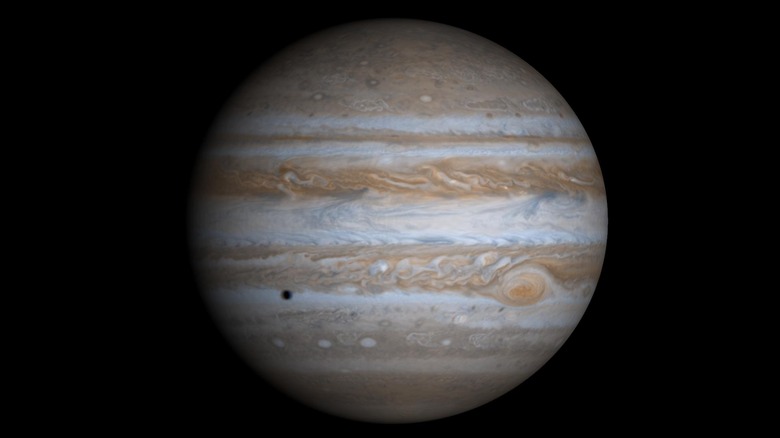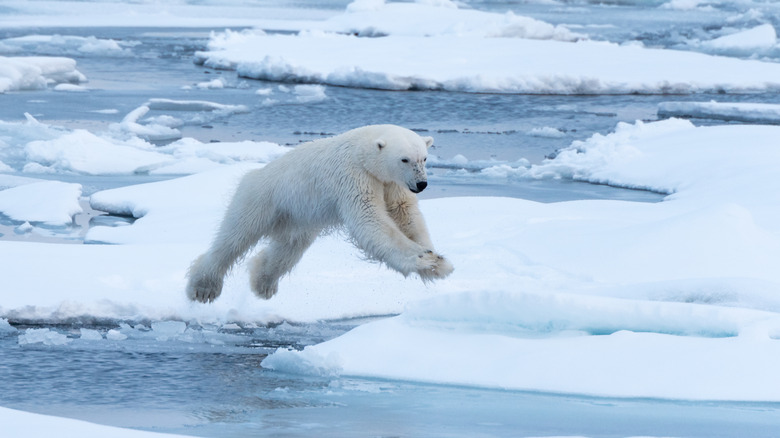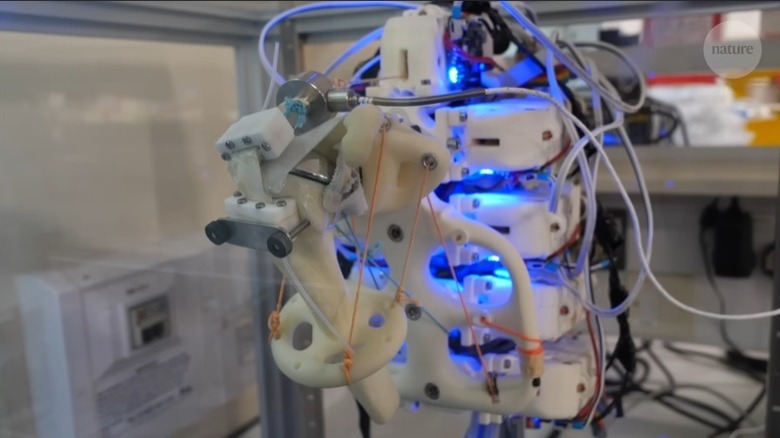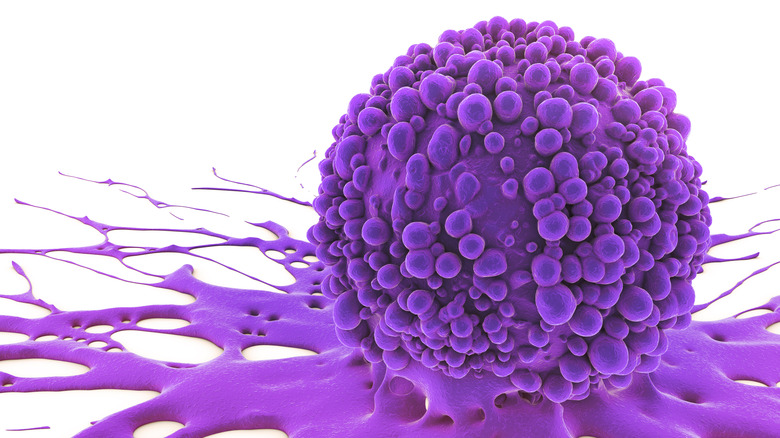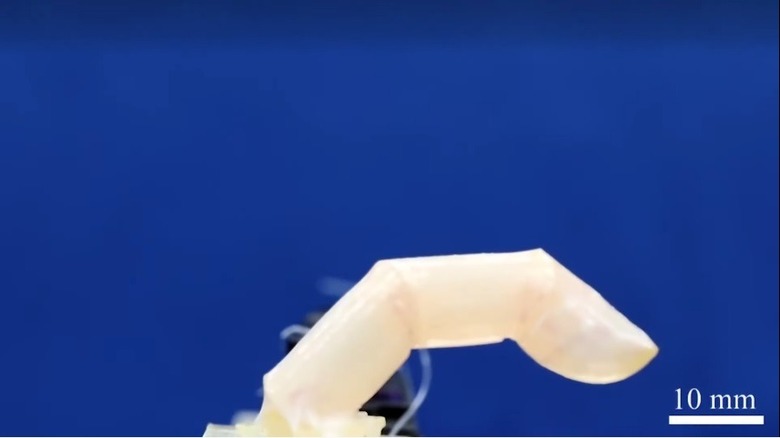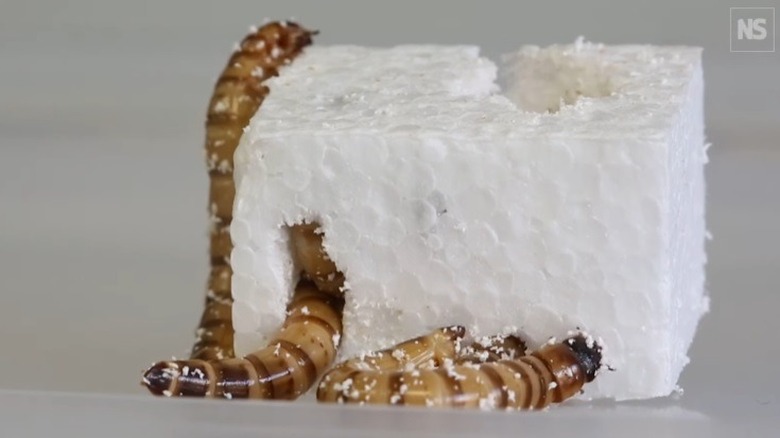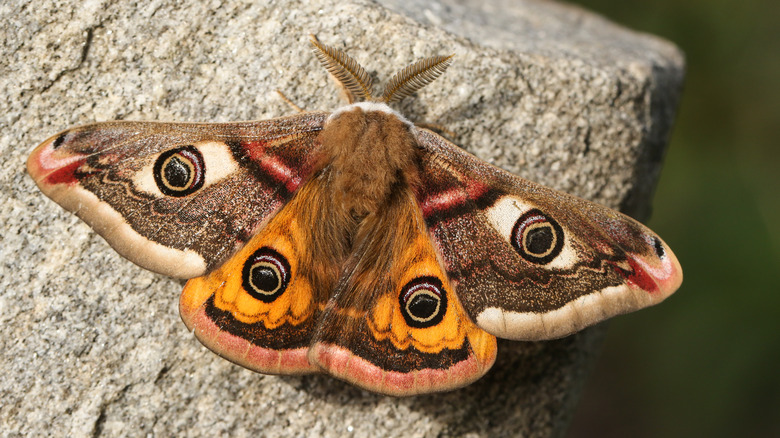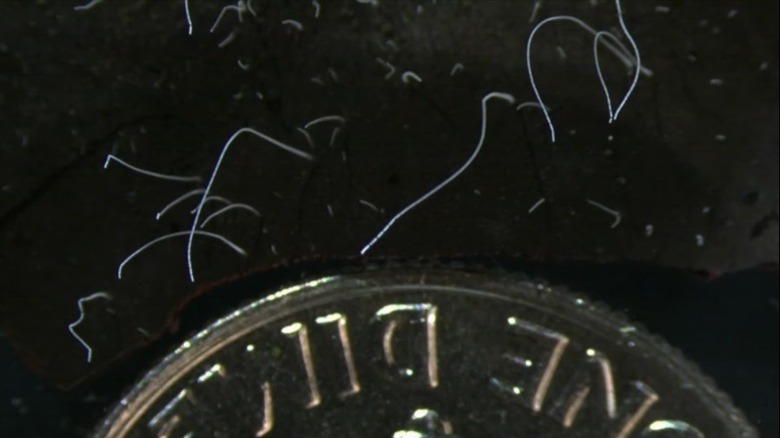12 Coolest Science Discoveries Of June 2022
The world around us is constantly changing and even when it stays the same, our understanding of it shifts as we discover new information. Then, just when you've incorporated some new fact into your worldview, something else comes along to challenge it all over again. Keeping on top of the latest universal software updates can be overwhelming, but we're here to help.
Every day scientists are making discoveries, re-analyzing old data, and pushing the boundaries of reality from the smallest organisms to the largest objects in space. Sometimes discoveries come fast and hot, other times they're the result of years or decades of careful research which only recently culminated.
Summarizing all of the latest science from the last month in one list is an impossible task, which says something wonderful about all of the incredible work scientists are doing all over the world, but we can give you a taste.
These stories are only a sample of the buffet of discovery laid out for us in the last month, but each of them changes the world and our place within it in some small (or maybe not so small) way. While we're still digesting what science laid out for us this month, we can't wait to see what it dishes up next. In the meantime, we hope you enjoy the twelve coolest science discoveries of June 2022.
Why Uranus and Neptune are different colors
When it comes to gas giants, Jupiter and Saturn get most of the good press. It makes a certain amount of sense; Jupiter is truly massive (more on that below) and has beautifully complex storm systems, while Saturn has a mind-numbingly gorgeous ring system. In fact, Jupiter is so privileged among the giant planets that another name for them is Jovian planets, meaning Jupiter-like.
Despite the preference for the two nearest celestial giants, Uranus and Neptune — the smallest and most distant of the group — have some pretty interesting stuff going on in the far reaches of the solar system. Both planets have similar atmospheres, made primarily of hydrogen and helium, followed by methane. While the atmospheres of Uranus and Neptune are only 2.3% and 1.5% methane, respectively, (via the National Weather Service), it's the methane that gives them their signature blue color.
Scientists recently discovered why the two planets are different shades of blue, despite being so similar, and it all comes down to haze particles in the middle of the atmosphere. Methane in the atmosphere condenses into snow or ice crystals which refracts light. The precise shade of blue on each planet is related to the amount of atmospheric activity. Because Uranus is less atmospherically active, its methane layer has an easier time building up, while Neptune is a little clearer. If things were different, they might look exactly the same.
A young Jupiter ate other planets
Jupiter is truly gigantic, with roughly 318 times the mass of the Earth. For comparison, Saturn — which is roughly the same diameter — has only about 95 times the Earth's mass, (via Universe Today). It's no wonder that Jupiter is so beloved by both amateur and professional astronomers. It is, in many respects, a microcosm of the solar system with dozens of moons and a gravitational pull sufficient to protect the Earth from impactors, (via NASA).
Despite being the solar system's planetary protector, Jupiter's early history may have been a little more violent. New research suggests that Jupiter may have gotten so large, in part, by gobbling up smaller planets during its formation.
The study was published in the journal Astronomy & Astrophysics and could teach us not just how Jupiter formed, but how other gas giants in distant stellar systems come together. It could also help to reveal the interior structure of Jupiter, beneath its thick gaseous atmosphere.
We're just lucky the Earth formed so far away from the gas giant, or else our little blue planet might have become a Jovian snack before we ever had a chance to get going.
Polar bears are adapting to climate change
Anthropogenic climate change through the introduction of CO2 and other greenhouses into the atmosphere is ongoing, with rising global temperatures and melting ice at the poles. Temperature increases will impact species all over the globe but animals like polar bears living at the north pole will likely be disproportionately impacted as the ground they walk on quite literally melts away.
Polar bears rely on ice sheets to live and hunt. As those icy terrains melt away, that means fewer and fewer resources for the bears to live upon. For the polar bear, at least, the world is literally shrinking. They're already classified as threatened, under the Endangered Species Act, with an estimated global population between 22,000 and 31,000, broken up across several subpopulations, (via Word Wildlife Fund).
One such subpopulation is breaking the mold and finding ways to more successfully survive in a warming world. A study published in the journal Science describes a small population living on fractured sea ice in Greenland.
The conditions of the ice in the region mimic those which are expected in the Arctic over coming decades, as a result of climate change. This subpopulation of bears is making a go of it, suggesting that polar bears might be more adaptable than we previously thought.
Growing human tendons on a robot skeleton
Today, most transplanted organs or tissues are taken from living or deceased donors, sometimes even from somewhere else in a patient's own body. In the future, however, we might grow all of our transplant tissues from scratch.
For years, scientists have been attempting to grow in laboratory bioreactors tendons that might be suitable for transplantation into human patients. While they have been able to successfully grow tissues, they haven't had the same robustness seen in the human body. Scientists believe that's because naturally grown tissues undergo constant stressors. They are compressed, stretched, and twisted, as a person moves their body around, all of which improve the flexibility and function of the tissue.
In a study published in the journal Communications Engineering, scientists developed a platform for mimicking the motion of the human body in hopes of crafting more successful tissues. A bioreactor was built atop a robotic skeleton modeled after the human shoulder and positioned such that it replicated the placement of the Supraspinatus tendon. Then, during a 14-day growing period, the shoulder moved around, simulating the natural movements of the shoulder.
An analysis of the cells' transcriptome after 14 days in the reactor showed changes in gene expression related to increased flexibility and function. We're still a ways off from growing complete transplantable tendons but building them on artificial bodies could get us there more quickly.
Supercharging the immune system to wipe out cancer
Most diseases you're likely to encounter usually subside on their own or else go away after a week or so of antibiotics. Cancer, however, usually requires we bring out the big guns. Chemotherapy, radiation treatments, and cutting away parts of the body are all typical treatments for cancerous tumors.
Scientists at the Memorial Sloan Kettering Cancer Center published a study in the New England Journal of Medicine on a specific type of rectal cancer called MMRd. These cancers succeed by tricking the immune system into ignoring them as they grow out of control. Normally, mutations in the cells would trigger an immune response and they'd be wiped out, but MMRd cancers send out a signal which shields them from the body's immune system.
Scientists wondered if there might be a way to take off the cancer's disguise and use the body's own immune response to fight back. They gathered up 14 patients with MMRd rectal cancer and gave them an immune checkpoint inhibitor known as Jemperli. While the sample size of the study was small, the results were incredible.
After just a couple of treatments, most patients reported feeling better and by the time the study was over, every single one of them was in remission with no signs of cancer. Moreover, none of them needed radiation, chemo, or surgery. Scientists are now investigating whether the same or similar treatment could be used for other cancers.
Sweetened coffee extends your life
Your morning cup of coffee might feel like it's breathing you full of life, and a recent study confirms it actually might be. The work, published in the Annals of Internal Medicine, looked at 170,000 study participants with an average age of 55. They were tracked over a nine-year period between 2009 and 2018 and self-reported their coffee consumption.
Researchers then compared the rate and type of coffee consumption with the number of deaths that had occurred within the group. Approximately 3200 deaths — approximately three-quarters of which were caused by cancer or cardiovascular disease — were recorded during the study period and researchers found that those deaths disproportionately impacted people who did not drink coffee.
Any amount of coffee consumption at all was associated with a reduced likelihood of mortality by about 16% to 21%, as compared to those individuals who did not drink coffee. Perhaps surprisingly, adding a bit of sugar to your drink literally sweetened the pot.
Participants who drank between 1.5 and 3.5 cups of coffee, sweetened with about a teaspoon of sugar, were 29% to 31% less likely to die over the study period. At present, there's no word on the impact of artificial sweeteners. Researchers concluded that moderate consumption of coffee, particularly if lightly sweetened, is correlated with a lower risk of death. Your coffee probably won't save you from a car accident, but it could stave off so-called natural causes.
Nightmares can predict disease
If you've ever thought your dreams were trying to tell you something, you might be right. A new study published in the journal eClinicalMedicine reveals that frequent nightmares could be an indicator of Parkinson's disease.
Previous research indicated that Parkinson's patients experience nightmares more frequently than the background population, particularly in the period shortly after diagnosis. You'd be forgiven for thinking that those nightmares are associated with the stressful experience of a disease diagnosis, but scientists wondered if it might be the other way around. Instead of Parkinson's predicting bad dreams, what if bad dreams could predict Parkinson's?
They looked at 3818 men at least 67 years of age and followed them over a twelve-year period. At the outset, each of them took a survey that asked, among other things, how often they experienced nightmares. During the study period, 91 of the participants were diagnosed with Parkinson's disease and an analysis of the survey data revealed that people who reported a higher-than-normal rate of nightmares were significantly more likely to develop Parkinson's over the next five years.
To be clear, there's nothing supernatural happening here. Scientists believe that changes in the prefrontal lobe, which are typical of Parkinson's, could result in increased nightmares and those psychological symptoms simply show up earlier than our best diagnostic tests.
There's no life on Venus... probably
On several occasions, the world has gotten excited at the prospect of microbial life on Venus. It's entirely understandable. Finding life, even simple life, on another world would fundamentally change the way we picture the universe. So far, however, every hint of life has turned out to be a cosmic misunderstanding.
A recent study published in the journal Nature Communications takes a systematic look at three chemical pathways for biological metabolism on Venus and found that none are consistent with what we actually see on Venus.
The idea is that any life on Venus must necessarily be impacting atmospheric chemistry. As such, if it exists, we should be able to find signs. It's that mode of thinking that got the scientific community so excited in 2020 when phosphine was discovered in the Venusian atmosphere.
On Earth, phosphine is created by anaerobic microbes — organisms that survive in an oxygen-free environment, (via Science) but it was quickly determined there were non-biological sources. However, phosphine is only one of many potential signals of microbial alien life on our sister planet. Each of the three processes the paper investigated didn't hold up to scrutiny. While specific chemicals might be related to life on Earth, scientists didn't find the associated chemicals needed to facilitate those reactions. It's the chemical equivalent of finding a tomato, but no garlic, cheese, or crust, and then claiming there's a pizza. One ingredient isn't enough for life — or pizzas.
Growing human skin for robots to wear
In a move ripped straight out of our science fiction nightmares, scientists have developed a method for growing human skin atop robotic bodies. The process, published in the journal Matter, isn't yet capable of covering an entire anthropomorphic robot, but they did succeed in coating a robotic finger.
The aim of the research is threefold. Scientists hope that covering robots in human skin will allow them to blend into human society more easily, not unlike the Terminator, but with more altruistic aims. Hopefully. Human skin could also allow for the addition of sensory capabilities like touch which are possible, but more difficult, with synthetic materials. Finally, biological materials are more environmentally friendly and won't result in excess plastics in the environment.
Getting the skin onto the robot finger involved bathing it in a slurry of collagen and skin cells. An initial layer was created, followed by a second layer weeks later. The primary benefit to this strategy is that it allows coverage over curved or uneven surfaces, as compared to growing skin separately and attaching it after the fact.
At present, the skin has to remain pretty consistently in a cell medium in order to gain nutrients, but future versions could have built-in circulatory systems for delivering oxygen and nutrients.
Superworms can live on plastic
The Zophoba Morio superworm, which is the larvae of a species of darkling beetle, has an insatiable appetite, eating everything from decaying plant matter to animal carcasses. They swallow up anything they can get their mandibles on, in order to gain enough nutrients to metamorphose. Scientists wondered if these preternaturally un-picky eaters might also be willing and able to eat plastic.
In experiments, published in the journal Microbial Genomics, scientists put the larvae into an environment filled with foamed polystyrene, more commonly known as Styrofoam, and left them to do their thing. They found that the worms were perfectly happy to eat plastic, but the real question was whether or not they could survive on it.
While it isn't the most nutritious diet, the superworms were observed to partially digest the plastic and gain weight, which suggests they were able to attain some nutrition from the material. The secret, it seems, is enzymes created by bacteria in the worms' guts. Those enzymes likely evolved to break down natural polymers and, through a bit of evolutionary happenstance, are also pretty good at breaking down synthetic ones.
Scientists hope the continued study will allow them to isolate those enzymes and maybe even engineer them to work more efficiently, in order to create more robust plastic recycling systems.
Making better sound absorbers with moth wings
The world is becoming increasingly noisy, and all of that noise poses a health risk, particularly to people in urban settings. According to the EPA, noise pollution can cause hearing loss, stress, high blood pressure, and sleep disruption, among a host of other ailments.
With that in mind, scientists are on the lookout for better sound-absorbing materials to help insulate us from an increasingly loud world. A new study published in the Proceedings of the Royal Society A looked not to engineering, but to nature — specifically moths — for inspiration.
The world of the moth isn't necessarily a particularly noisy one, but there are certain sounds they rather not hear and when they do hear them, they want to absorb as much as possible. Bats, one of the moths' primary predators, use echolocation to ping sound waves off of prey animals and narrow in on their location. Finding efficient ways to prevent that signal from getting back to a bat is quite literally a matter of life and death.
To test the sound-absorbing qualities of moth wings, scientists coated metal disks with pieces of moth wings and bounced sound off of them. They found that the wings absorbed up to 87% of sound waves by vibrating small scales on their surface.
Their sound-absorbing capabilities are roughly ten times better than anything humans have been able to engineer and could inspire the creation of sound-absorbing wallpaper.
The largest bacterium ever discovered
Scientists studying the mangrove forests of Guadeloupe came across tiny white filaments jutting up from the detritus underwater. At first, they thought they might have uncovered a new type of worm or fungi, but further scrutiny revealed the largest bacterium ever discovered, according to a study published in the journal Science.
Dubbed Candidatus Thiomargarita Magnifica, the new bacterium is roughly 50 times larger than the next largest known species and is large enough to easily see with the naked eye. It was previously believed that a bacterium shouldn't be able to get this large, owing to an upper limit in energy acquisition. Ordinarily, microbes transport energy across the cell membrane and have to deliver that energy to the entire cell. As microbes get larger, the ratio of their volume to their surface area increases and they can't get energy quickly enough.
Ca. T. Magnifica overcomes this barrier by creating energy not just at the cell membrane, but throughout the cytoplasm. That's what allows them to break size records. They get that energy from their unique environment. In mangrove forests, leaf litter falls into the water where it slowly breaks down into black sludge and releases sulfur. It's an environment that would be toxic to many organisms, including humans, but Ca. T. Magnifica is thriving.


